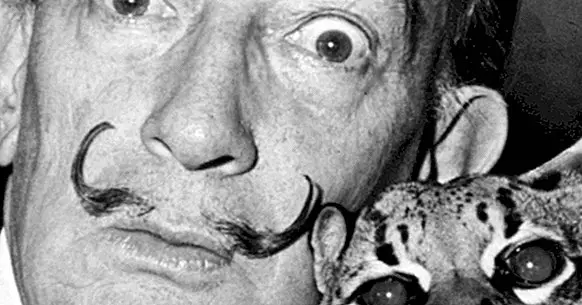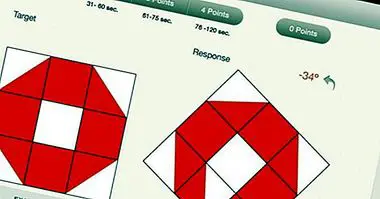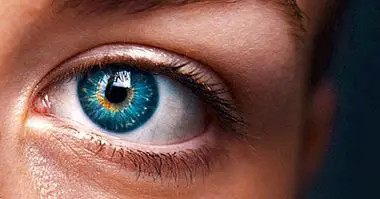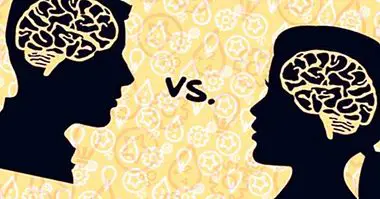The associationist theory of creativity of Mednick (and other authors)
The associationism was in its beginnings a philosophical approach that affirmed that the human thought operated associating a state with other successor states.
The British associationists, among which John Locke and David Hume stand out , argued that this principle of association applied to all mental processes and that the ideas were associated in the mind following certain laws, among which stood out the law of continuity and the law of similarity.
In what way is this concept associated with creative processes? For this we must examine the associationist theory of creativity .
The ideas of Sarnoff Mednick
The law of continuity postulates that the ideas that have been experienced together tend to appear together in our minds (for example, when a situation evokes some feeling or the memory of a person).
The law of similarity, for its part, argues that psychic contents that have similarity tend to manifest together in our thinking (for example, when a picture of someone evokes traits of his personality).
In 1962, Sarnoff Mednick published his associative theory of the creative process , in which he argued that creative thinking was the process by which disparate elements come together in new combinations to elaborate a proposal useful for the individual or society. The combination of the most remote elements is considered more creative than the combination of more similar elements.
Serendipity, similarity and meditation
Mednick argued that the individual can produce creative solutions through one of three processes: serendipity, similarity, or meditation . Serendipity would be a process of accidental association, the similarity would be by evocation between two elements and meditation would produce evocation to present three or more elements.
This author also identified different variables, especially differentialists, which could contribute to increasing the probability of reaching a creative solution or of making a novel association. In this way a basis for the psychological study of the creative was created from an associationist theory of creativity.
The Remote Associations Test
Apparently, one of the advantages of the theory of association applied to creativity is that it could be put to the test. In 1967, Mednick operationalized the associative definition of creativity through the Remote Associations Test (RAT) , which is a very applied instrument in research on creative thinking, even today.
In their study, the Mednick team reported on the high RAT reliability values , as well as a positive correlation between high scores in RAT and high mental flexibility, while low scores in RAT were related to highly dogmatic individuals. Subsequent studies have found high correlation with the Creativity Rating Scale (CRS), while there seems to be no correlation between the RAT and the Miller Analogy Test (MAT) nor with the Grade Point Average (GPA).
Criticism of the creativity test
Despite the intensive use of the RAT in the study of creativity, the instrument has not been exempt from criticism . One of them is oriented to omit the effect that the motivation of the individual may have on the score, as well as other factors intrinsic to the person, such as their past experiences. It has also been found that a high score in RAT is significantly related to other cognitive variables such as verbal ability.
Likewise, the associative theory as a whole also has detractors. Among them is Daniel Fasko, who argues that the associative theory of creativity is too simplistic to address the complexity of this psychological phenomenon.
Alexander Bain and the concept of incubation
One of the proposals on creativity that has been born of associationism is the idea of incubation proposed by Alexander Bain.
This author proposes that the incubation takes place when the new combinations of elements emerge from the ideas that already exist in the mind of the individual. From this perspective, creation from nothing would be impossible, because creation is understood as an act of combining, in a novel way, the substrate stored in the minds of individuals.
Incidental learning
Other authors point to the importance of the process of formation, retention and use of associations not only for creativity, but also for incidental learning, understood as incidental learning a situation in which apparently irrelevant ideas or relationships tend to be associated later generating a change in the knowledge of the individual and / or in his behavior.
In this sense, it is understood that a creative individual will exhibit better incidental learning.
To explain the possible connection between creativity and incidental learning, two hypotheses have been proposed: (a) a highly creative individual has a greater perceptual sensitivity for seemingly irrelevant stimuli; and (b) the highly creative person can better retain the stimulus and make it more accessible later, with the purpose of using the information in an incidental learning task (Laughlin, 1967).
Creative thinking seen from associationism
In summary, from the perspective of associationism, creative thinking is the result of a mental process in which disparate elements come together in a novel way resulting in a useful proposal to the individual or the environment , or solving a problem.
According to the associationists, ideas lead successively to other ideas and this continuum of connections would constitute the general functioning of the mind.
From this perspective, any associative theory about creativity will focus on analyzing the ways in which these ideas can be generated and in how these ideas are linked together in our mind .
At present, there is a consensus that expanding the number of options or elements, so that a great variety of associations can be generated, facilitates creativity. In fact, many of the current theories of creativity place the key to the creative process, precisely, in the association of ideas proposed by Mednick.
- Related article: "The psychology of creativity and creative thinking"



















